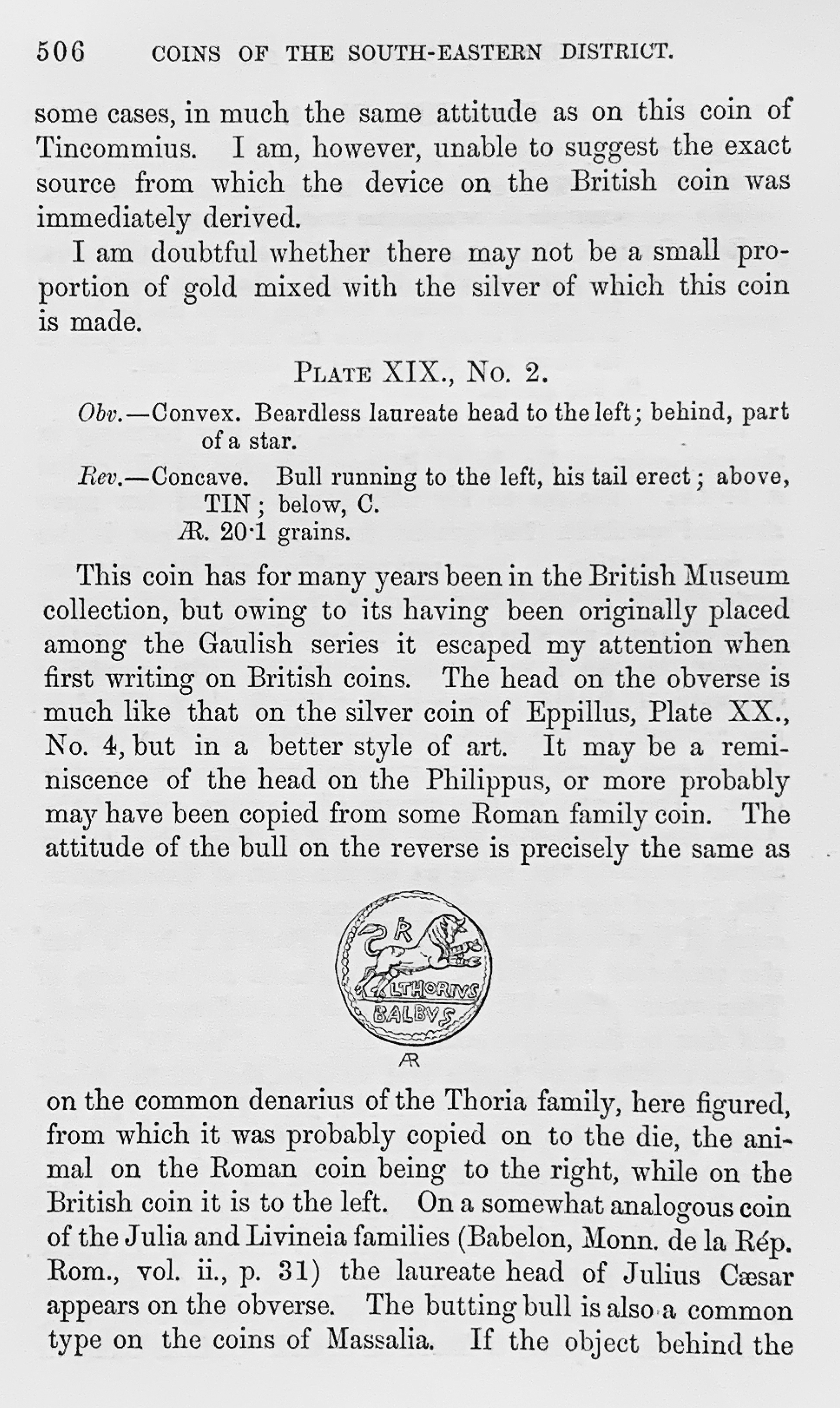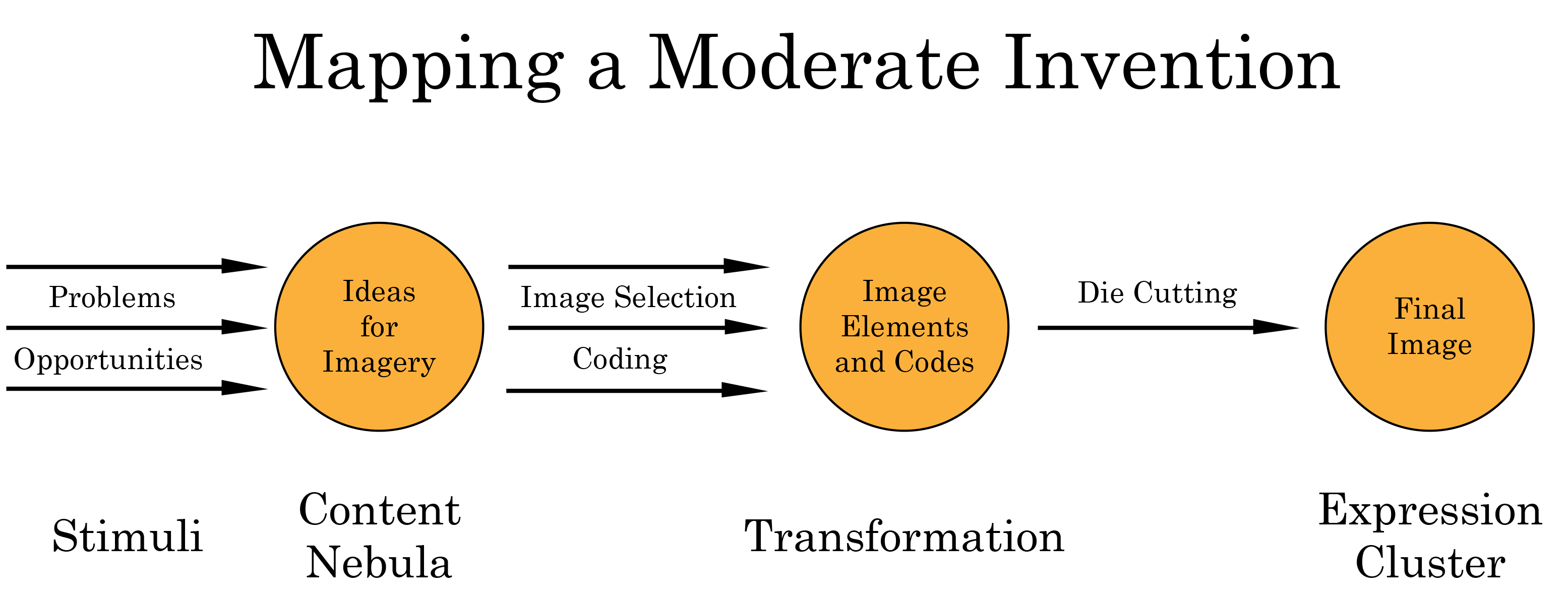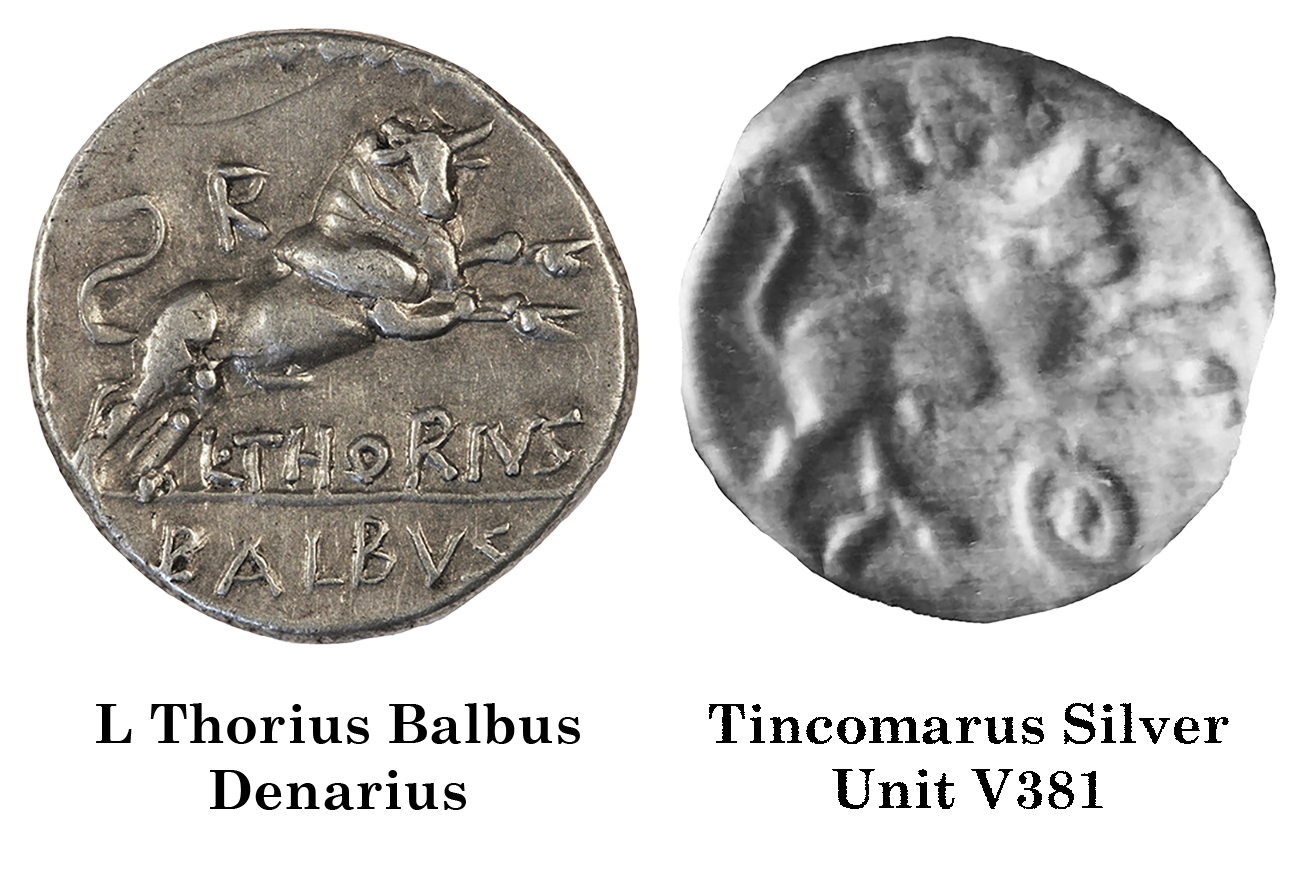
Numismatic Articles
Van Arsdell 2020b (Info)
Semiotics of Celtic Coins XVII – Tincomarus Rolls the Dice
by Robert Van Arsdell
Introduction
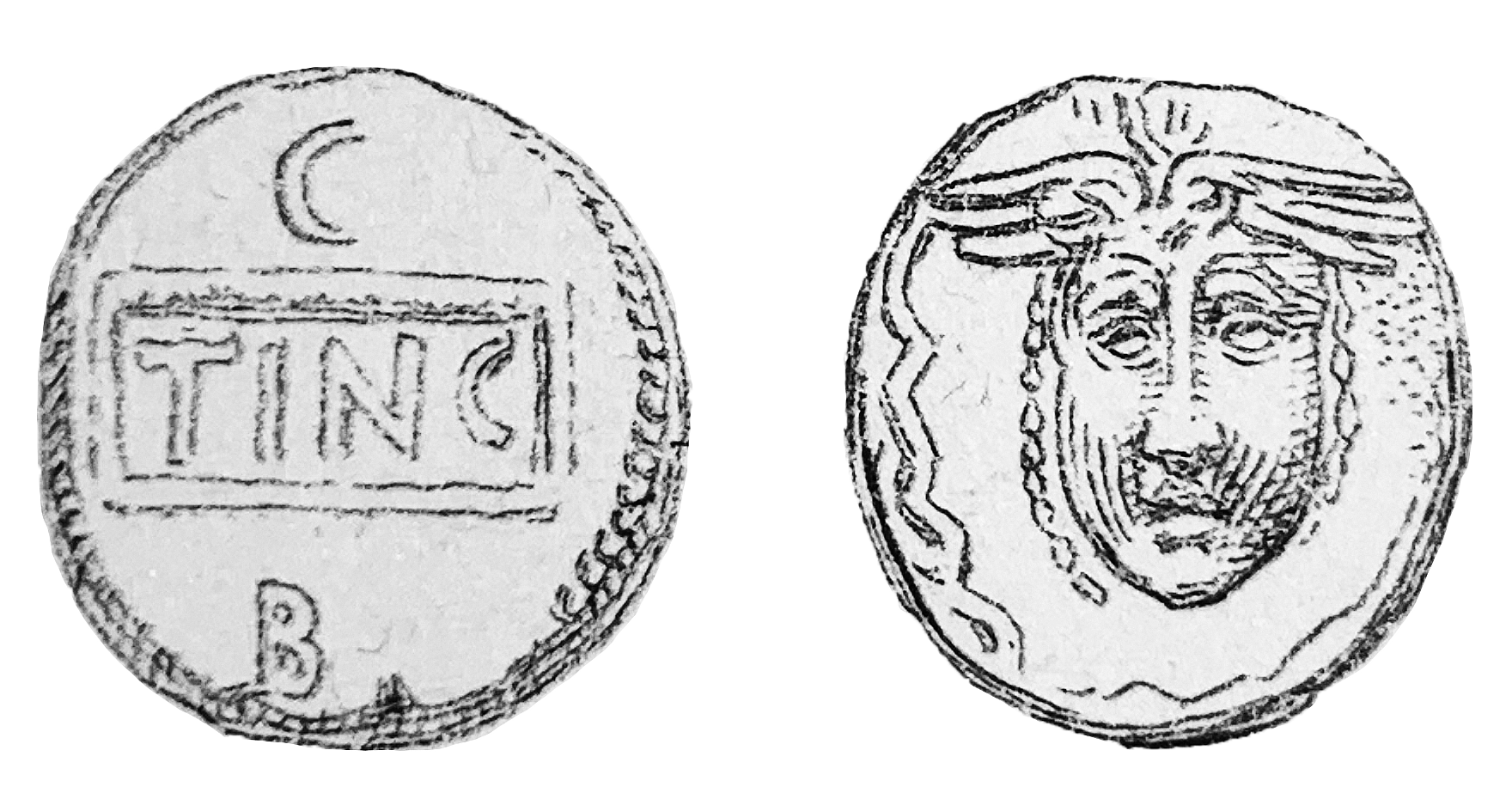
In an early article in this series, I suggested Tincomarus' Medusa coin carried an appeal for support.(Info) The Medusa image, adapted from a Roman denarius, asserted that he was using his relationship with Rome for the benefit of his people. It's possible that his elites looked at the image and became suspicious of Tincomarus' intentions. He was eventually deposed and fled to the Romans for protection. The imagery may have been part of his downfall. Had he miscalculated his situation, gambled with a message to his people – and lost?
There is more to be told about this episode. Tincomarus is likely to have been one of the British hostages sent to Rome after the Caesarean Invasion. (Info) Those hostages became indoctrinated with Roman culture and would have learned to use coins for propaganda purposes. One wonders how well Tincomarus had learned his lessons. If he'd been clever, he'd have won over his people and had a long reign. But instead, we believe he lost control of the situation. He was one of the first British rulers to to add Roman images to his coins in a systematic way. Had he used the images incompetently – had his messages been misunderstood?
But wait, lurking in the background is a more ominous interpretation. Perhaps he'd overestimated his power and threatened his people with repression. They understood the message perfectly, rose up and ousted him.
Which shall it be: was Tincomarus an incompetent victim or an overbearing despot?
This is actually a bogus question. Everyone knows that human interactions are complicated – they shouldn't be distilled down to a simple choice between stark alternatives. Semiotic analysis can assess the complications and nuances of the situation here. It provides a better understanding of the problems Tincomarus faced and the decisions he made.
The semiotics of Tincomarus' other coins are the key. He issued a series of silver pieces with a charging bull motif that give the additional insight. By analyzing these as Moderate Inventions, we can discover the more elaborate story lurking in the background.(Info)
The Silver Coins
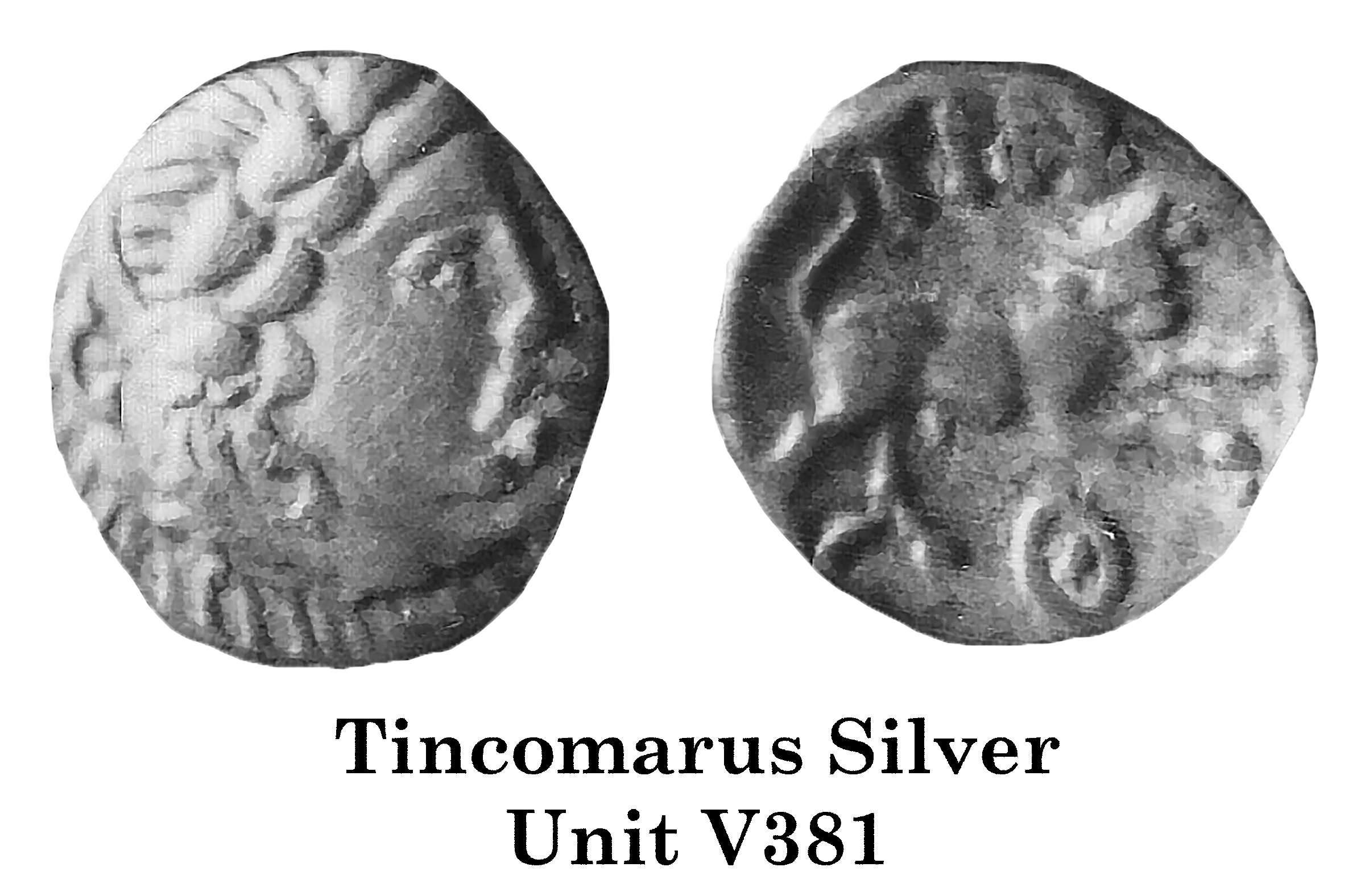
Tincomarus issued at least five silver coins with the charging bull. It was evidently a favourite motif.(Info) Evans identified the origin of the charging bull as a Republican denarius of L Thorius Balbus. (Info)
British finds of seven of these denarii in the Portable Antiquities Scheme database support the idea that the type was known in Ancient Britain.(Info)
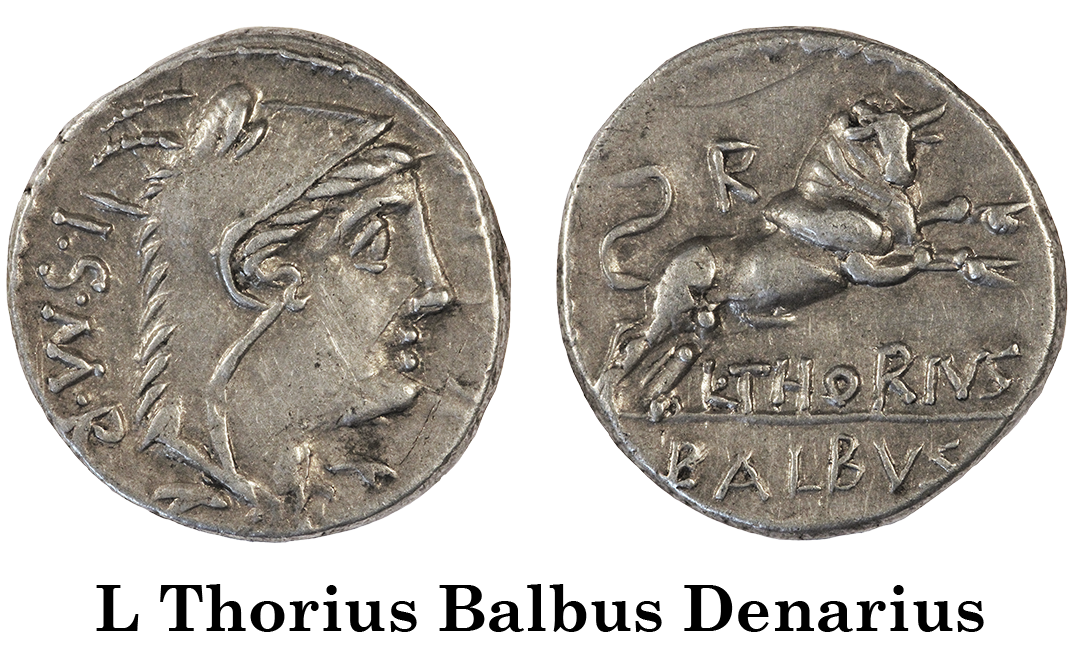
The L Thorius Balbus denarius carries a head of Juno Sospita on the obverse and the charging bull on the reverse. The bull is adapted faithfully on Tincomarus' silver coins. They show the bull's head turned to face the viewer, its tail erect and its genitalia in detail. The bull rears on its hind legs with its front legs extended on all the British coins. The image is copied almost exactly. The image of Juno Sospita, however was not adapted to the British coins (the head on the British coin appears to have a moustache). Thus Tincomarus believed only the charging bull sent the right message to his people.
NB: In the following analysis, the Stimuli and Content Nebulae draw upon archaeological findings and the works of ancient and modern authors.(List)
The First Semiotic Analysis – a peaceful appeal for support
Stimuli and Content Nebula

The Stimuli and Content Nebula drove Tincomarus' choice of imagery. The Roman bull played an important part because it's used on so many coins. Did Tincomarus use the Roman Code for the bull? Though it's reasonable to believe the Roman coin was known in Tincomarus' time, it had been struck some 75 years before. Thus, it's unlikely anyone in Britain knew the Code for the bull. Furthermore, the Roman Code has been identified in modern times and is fairly well accepted by numismatists. (Info) The name Thorius on the denarius and the Latin word for bull Taurus are so close when spoken, that the two are considered a play on words (Taurus = Thorius). It's unlikely this pun was known to Tincomarus. We can conclude he liked the image, borrowed it – but gave it a new Code suited to his purposes. The Roman Code was not one of the Stimuli.
Suppose we believe the charging bull was merely another appeal for support (as the Medusa had been). A key Stimulus for Tincomarus was that he faced only discontent amongst his people. He wasn't feeling the threat of being deposed.(Stimuli) Under this scenario, he would have used the bull as just another image to show his good relations with Rome. Thus, the Content Nebula stressed his need for support, but he wasn't taking any real action. (Content Nebula)
Transformation, Expression Cluster and Sememe
Tincomarus chose the charging bull as part of the coin's imagery and gave it a new Code. The bull demonstrated his good relations with Rome. It was a peaceful appeal for support.(Transformation and Expression Cluster)(Sememe)
Yet something seems wrong....
Initially, the "peaceful appeal for support" looks like a plausible interpretation. But surely a charging bull can't be a peaceful appeal. It's suggesting something more dramatic. The bull turns its head to face the viewer – it's threatening the viewer, not something off to the side. The bull's turning to attack the viewer. The analysis above has missed something important.
There's a more sinister interpretation available here. Tincomarus could use the image of the bull to say he would use force against his people to prevent a rebellion. Tincomarus was the bull.
The Second Semiotic Analysis – Tincomarus threatens his people
The alternate Stimuli would include the fear that Tincomarus would be overthrown and the Content Nebula would stress his need to prevent this at all costs.(Stimuli)(Content Nebula)
The alternate Transformation and Expression Cluster now use the charging bull to threaten the dissident elites with violence if they rebelled.(Transformation and Expression Cluster)(Sememe)
Is one of these better – or do we have to seek a better answer?
To decide whether Tincomarus was an incompetent victim or an overbearing despot we would need to decide which interpretation best matched the situation.
There would be two questions to answer:
- In the Expression Cluster, did the inclusion of the Roman image work with the other image elements to present a coherent set of Denotations and Connotations?
- In which of the Sememes did the set of Denotations and Connotations best solve the problems in the Content Nebula?
The first question is easier to answer. The Roman bull does work to produce a coherent set of Denotations and Connotations. Although the Sememe for the "threat of violence" interpretation seems best, we can't be sure the "peaceful appeal" is wrong. Although one of the Sememes looks better, both are still plausible. This should be the first red flag that cautious us not to choose between them.
But the second question is key. Clever image interpretations can be undone if the Stimuli are incomplete or the Content Nebula is faulty. Then the Sememe doesn't solve the problems in the Content Nebula. The whole image analysis collapses.
We've seen this before in Hawkes' and Steven's "beer vs. wine" suggestion.(Info) A clever image interpretation is undone by ignoring key Stimuli. Both Verica and Cunobeline had similar claims to "wine is best" and a "pro-Roman stance". Thus the idea that Cunobeline was anti-Roman and thus anti-Verica made little sense.
In the present case, Tincomarus was ultimateley deposed. This suggests that the Stimuli should include the idea that he likely was under threat of revolt. Key items in the Content Nebula should have been the fear that he might be overthrown, and that drastic action was necessary. The fact that he chose a charging bull shows Tincomarus was likely making a threat. The appearance of this image on many of his coins indicates he was taking drastic action. We could accept the "overbearing despot" idea as the more plausible of the two.
But we shouldn't, because there are more Stimuli we've ignored. They suggest a still better interpretation is available.
There's reason to believe Tincomarus was a sophisticated ruler reacting to a complex situation. He surely realized that some of his people supported him while others did not. He was receiving different Stimuli from different groups. (Stimuli)(Content Nebula) He should have learned in Rome to use imagery to tailor his messages to his audiences. He would use some images to reassure his supporters, but use different images to threaten his opponents.
If his supporters had been the agricultural elites, he could put reassuring images on his gold coins. The agricultural elites were the wealthy who would likely see gold coins. Thus, he could put reassuring images (the Medusa) on the gold and expect that mostly wealthy viewers would see it.
So who were the opponents? They likely included the religious elites who would not like Roman mythology on the coins. After twenty year's training, they were the custodians of the oral traditions, not the Romans. If they believed a bull image should be used as a metaphor for a protective goddess (Luna or Diana Lucifera), they wouldn't like it used to suggest violence. (Info) Opponents would also include young warriors, ones who has not gone to Rome. Ones looking for an opportunity to overthrow a seeming interloper in their midst.
Neither of these opposition groups were likely fabulously wealthy, one could reach them via the silver coinage. Thus, Tincomarus would restrict his threats to the silver.
Thus we can see Tincomarus in the middle of a fairly complex situation. He would have solved the problems in the Content Nebula in a sophisticated way. He could send mixed messages to his people and have some expectation that the right people would see the right ones. If he miscalculated, it would have been that the wrong people saw the wrong ones. But the miscalculation would be worth the risk. The greatest risk would be that the malcontents didn't believe Tincomarus would carry through with the threat – this would have increased the likelihood that they went into open rebellion. Tincomarus rolled the dice – and lost.
Summary
Although we were able view the gold Medusa as a peaceful appeal for support, we have to change our thinking for Tincomarus' silver coins. The charging bull is an ominous image, it suggests he was also making a threat. He used his coinage to send a mixed message to his people and hoped for the best. Some group would have none of it and rebelled anyway. Sometimes it's necessary to looks at all the coin types in a series to understand a given situation in detail.
It's useful to note how a seemingly minor change in the Stimuli becomes magnified in the Content Nebula. This cascades down through the Transformation. Although the Expression Cluster is unchanged, the meaning becomes drastically different.
In this work, one is inclined to devote much of the effort to analyzing the imagery to determine the meaning. Yet it is the non-semiotic aspects, the Stimuli and Content Nebula, that ultimately determine that meaning.
The Stimuli and Content Nebula are the Extensions into the Continuum that drive the image creation and coding. They are the keys unlocking the meanings of Celtic images. Because human interactions are complicated, we should be looking for sophistication in our answers.
One final thought involves Dubnovellaunus-in-Essex. He didn't use blatant Roman imagery on his coins. Yet, he was overthrown as well. Thus, we have two contemporary rulers, using different approaches, but ending up with the same result. It suggests that the British people were in no mood to accept Roman puppets. Messages on coins couldn't change that. Future rulers would have to be even more sophisticated in their approach. But that is a another story, for another semiotic analysis.
End

